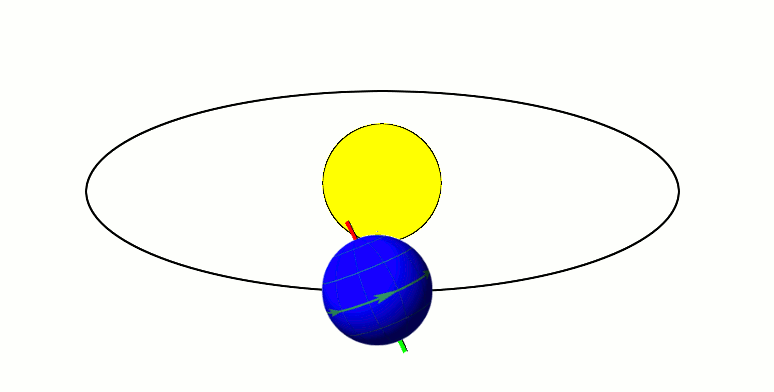
Caption: An animation of the Earth's orbit around the Sun.
Features:
- The animation is
not-to-scale.
- Over relatively short time periods like a year
and a human lifetime, the direction of
the Earth's axial tilt
is constant with respect to the
fixed stars, and therefore also
with respect to
ecliptic pole
which is perpendicular to the
ecliptic plane
which is the plane of the
Earth's orbit.
Recall that saying "with respect to the fixed stars" is a conventional way of saying with respect to the fundamentally absolutely unrotating observable universe with respect to which all inertial frames do NOT rotate---except maybe in very strong gravitational fields like near black holes???---but yours truly has to guess about this since no one explicates this factoid. The best explication so far (and it does NOT say much) is Wikipedia: Inertial frame of reference: General relativity.
- The varying average amounts of
solar intensity
(AKA insolation AKA
(solar energy per unit time per unit area) received by the
Northern Hemisphere
Southern Hemisphere
are the causes of the
seasons.
- The Northern Hemisphere
is in summer
when the north end of the
Earth's axis
is tilted toward the Sun
and in winter
when it is tilted way.
- In between summer and
winter,
one has the in-between seasons,
spring and
fall.
- The Southern Hemisphere
is the mirror-image case to the
Northern Hemisphere.
- For a slower equivalent to the animation, see the video Earth Sun Relations | 1:11 in Earth season videos below (local link / general link: earth_season_videos.html).
Image link: Wikipedia: File:Earth tilt animation.gif.
Local file: local link: earth_seasons_animation.html.html.
File: Earth file: earth_seasons_animation.html.html.